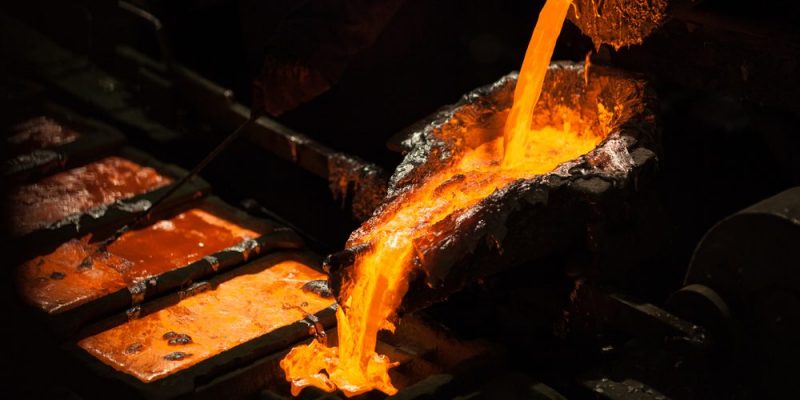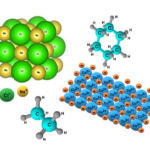We explain what an alloy is and the types of alloys that can be manufactured. Also, some examples of this metallic mixture.

What is an alloy?
It is known as an alloy the combination of two or more elements, at least one of which is a metal to constitute a new material that has the properties of its components.
Alloys are generally considered as mixtures, since no chemical reactions occur between the constituent elements that is, no bonds are formed between its atoms, nor does the constitution of its molecules change.
Generally, different metallic materials are combined in alloys, although a metallic one can also be combined with another non-metallic one, thus altering its properties.
Generally, the resulting material will have metallic characteristics: gloss, good thermal and electrical conduction certain hardness, malleability, ductility, etc. The alloying procedure is very common in the steel and materials industry, and it is the only way to obtain materials such as bronze or brass.
All alloy It is made up of at least two components: a base material to which alloying materials are added, which can be one or several. The point properties of the resulting material depend directly on the properties of the initial elements involved, as well as the proportion between them.
Therefore, by adding more alloying material, the characteristics of the base material are modified more. Depending on the case, the proportion between one component and another may consist of minimum percentages (0.2 to 2%) or much higher percentages.
See also: Homogeneous mixture
Alloy Examples

- Steel It is a fundamental alloy for industries built by humans. It is a resistant but at the same time malleable material. This alloy is made up of a mixture of iron and various elements such as carbon (it is in greater quantity), silicon, sulfur and oxygen. Carbon transforms iron into a more corrosion-resistant material, although it also makes it more brittle, so it is added in a small percentage.
- Brass. It is widely used to manufacture containers, especially for non-perishable foods (cans), as well as in domestic plumbing and taps. Brass is obtained by alloying copper and zinc. It is a very ductile and malleable metal that shines easily when polished.
- Bronze This material played an extremely important role in the history of civilization to make tools, weapons and ceremonial objects. Bells are made with this material, as well as many coins, medals, statues, among many other objects. The wide number of applications of this material is due to its good malleability and its economical production from the alloy of copper and tin.
- Amalgam It is an alloy of silver, tin, copper, gold, zinc and mercury. It is a pasty substance that hardens when put in contact with air, and was widely used in dentistry. Its mercury content makes it slightly toxic to the human body, which is why it has stopped being used for this purpose. However, there are other types of amalgams that are used in other sectors, such as the glass industry.
- Duralumin It is a light but resistant alloy, the product of combining the properties of copper and aluminum. It is very useful for the aeronautical industry as it is a light and malleable material, although not very resistant to corrosion.
- Pewter It is an alloy composed of copper, lead, tin and antimony, to achieve a substance of enormous lightness and great heat conduction. It is ideal for making kitchen objects (especially cups and pots). Its great malleability comes from the particular properties of lead.
- White gold. This material is obtained by alloying gold, copper, nickel and zinc. It is ideal for making jewelry that is less heavy than those with a high content of pure gold. It is also used to produce less expensive objects than those made of pure gold, which is very expensive. Its main use currently consists of the manufacture of rings, necklaces, medals, and other ornamental objects.
- Magnalio It is an alloy composed of aluminum and magnesium, with only 10% magnesium. It has low density and high hardness, toughness and tensile strength. It is mainly used in the automotive industry and to manufacture canned products.





